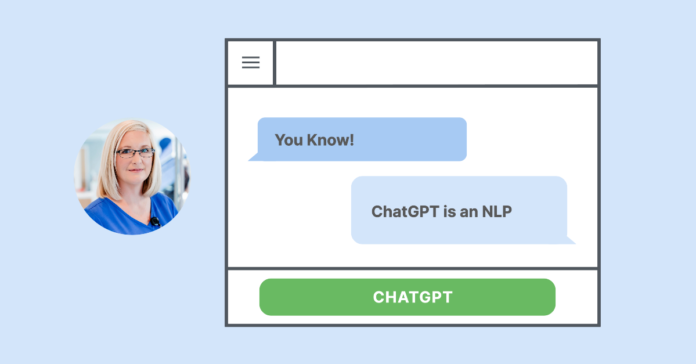Lately, artificial intelligence has gone a long way in enabling better human/machine interaction. The most prominent area where this has been realized is in natural language processing. Through NLP, computers can comprehend, interpret, and generate meaningful information from human languages. This article will investigate the details regarding AI technology used for NLP; it will also answer important questions while pointing out its transformative power.
Is ChatGPT an NLP?
OpenAI developed an application called ChatGPT, which uses Natural Language Processing (NLP) technology. This software is designed to comprehend and generate text resembling human speech from the given input. With the help of complex algorithms and extensive training data, it can hold significant discussions, respond to queries, or accomplish other related linguistic functions. Such kind applications illustrate how powerful systems that exhibit human-like behavior could be created through NLP.
At the heart of ChatGPT’s abilities is the model it is based on. This model has been trained using a variety of different subjects and language structures so that it can always produce responses that make sense in context. As such, ChatGPT can be employed for a number of purposes, such as customer service and creating articles, among others, where understanding human speech patterns & generating them back is key.
What is NLP with an Example?

Natural Language Processing (NLP) is a field of artificial intelligence (AI) that focuses on the connection between computers and humans through ordinary language. It encompasses various tasks such as language translation, sentiment analysis, speech recognition, and text generation. natural language processing’s major goal is to enable machines to comprehend human language and use it meaningfully.
To clarify NLP using a scenario, let’s take the example of sentiment analysis. This involves detecting the emotional tone in a body of text. A natural language processing system could read the sentence ‘I love the new features of this product, my life has become so much easier because of it’ and identify it as positive. It is a widely applied feature across industries like marketing, customer service, or social media monitoring, where people’s views need to be understood for better service delivery.
What are the 5 Steps in NLP?
The method of Natural Language Processing usually has 5 main stages, which are very important in converting unstructured language data to useful knowledge:
- Tokenization: Tokenization is the initial stage of natural language processing that breaks up the text into smaller parts, known as tokens. These tokens could be words, phrases, or even entire sentences. The purpose of breaking down the information in this way is to make it easier for analysis.
- Part-of-Speech Tagging: When every word is classified as a noun, verb, adjective, etc., it is called a part-of-speech tag. Assigning part-of-speech tags to tokens helps the system understand a text’s grammatical structure and each word’s function within a sentence.
- Named Entity Recognition (NER): Named Entity Recognition involves finding and sorting entities in text like names of persons, companies, dates or places. NER is important as it helps extract useful information from the text and understand its meaning.
- Parsing: The act of processing a sentence grammatically is referred to as parsing. This comprises locating how tokens relate and creating a tree diagram that displays the sentence’s grammatical structure. Also, parsing aids in grasping what various parts of intricate sentences mean.
- Semantic Analysis: The last step in NLP is the semantical analysis, by which the system understands the meaning of the text. This includes identifying context, disambiguating words with more than one meaning, and inferring the general intention behind it. Tasks such as summarizing texts, answering questions based on them, or translating between languages require semantic analysis at their cores and cannot be done without it.
The steps outlined above should be followed by NLP systems when processing unstructured text in order to convert it into a structured form that can be used for different tasks. The continuous growth of NLP is leading to the creation of increasingly advanced artificial intelligence models able to comprehend and produce human languages with great precision.
For a deeper dive into the intricacies of NLP technology, you can explore this comprehensive article on NLP Technology, which provides further insights into the future of human-computer interaction.
Conclusion
People are communicating with Artificial Intelligence (AI) by using Natural Language Processing (NLP). Machines now comprehend and produce human language more accurately than ever, thanks to NLP technology, including chatbots like ChatGPT, sentiment analysis, etc. If we want to tap into all that potential, then we should take all these steps when working on NLP because only in that way can we make systems smart enough to improve different areas of our lives. In this area where research and development never stops, it is safe to say that we have bright prospects ahead for the future of how humans interact with machines.
Explore More
If you’re interested in learning more about the applications and advancements in NLP, consider checking out our related articles:
- The Impact of AI on Content Marketing
- How Machine Learning is Transforming Customer Service
- AI and the Future of Work: What You Need to Know
Call to Action
Your insights matter to us about NLP and its application. Please drop a comment to let us know what you think or your involvement with NLP technology. If you want to read more articles similar to this, then register for our newsletter as we keep you current with AI and technology trends.


